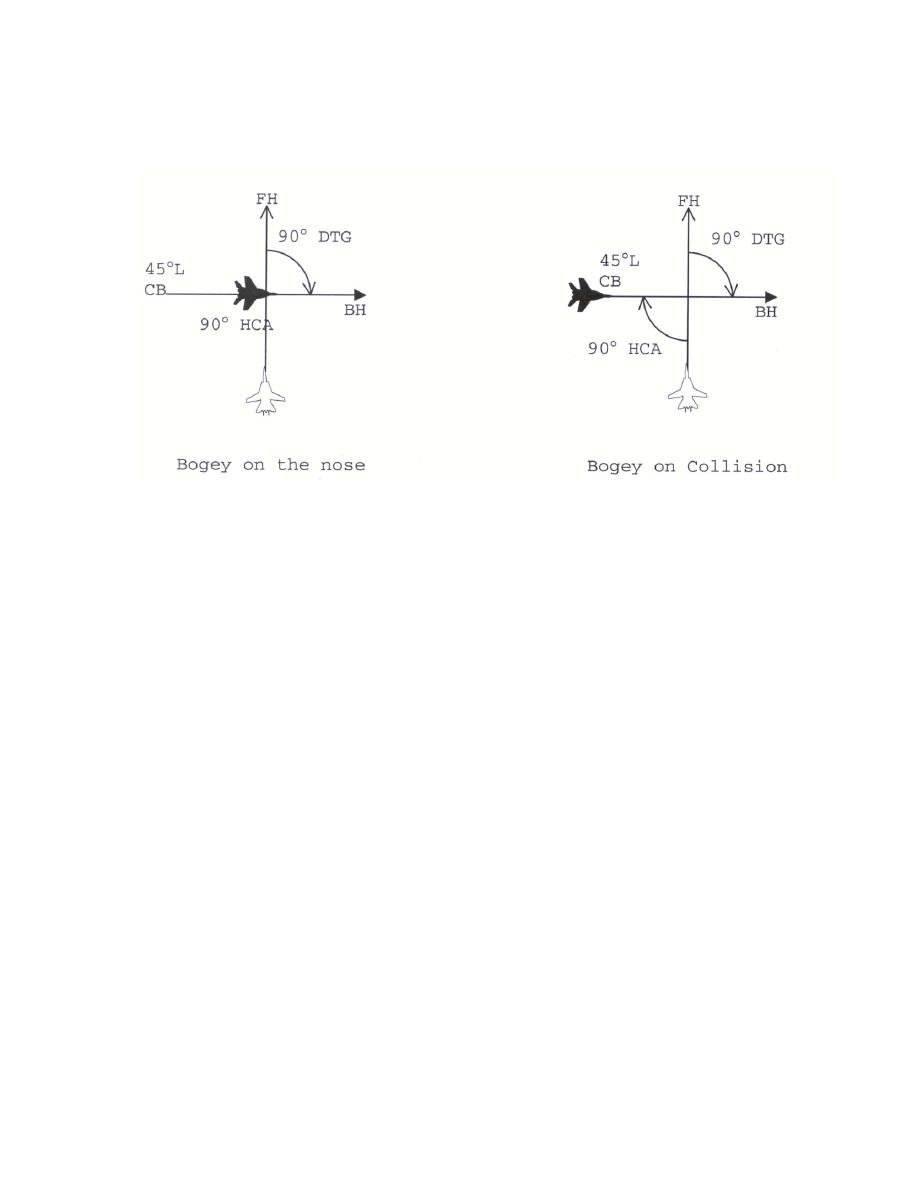 |
|||
|
|
|||
|
|
|||
| ||||||||||
|
|  INTERCEPT PROCEDURES TEXTBOOK
It must be noted that these maximum drift rates occur with the bogey on or close to the
fighter's nose. A 90 cut, with the bogey on collision, will have 90 DTG but no drift (Figure 7).
Figure 6
Figure 7
Ideal Drift Pattern and Counterturn Sequence
Counterturns are divided into three major categories, each with its own ideal drift pattern for
controlling the intercept. The determining factor is the Lateral Displacement available for the
CT. Remember, LD is computed from TA and slant range, so knowing TA tells us indirectly
which drift pattern we will try to follow.
(1)
Low Target Aspect
With low target aspect (0-15), the displacement turn drives the fighter away from the bogey
flight path. Ideally, the fighter will obtain 20,000 feet of LD. When outward drift is noted, it is
countered initially with an easy turn. The bogey should be held at a constant angle off to allow
maximum lateral separation to be gained. This may require either easing the turn of the fighter
or hardening as appropriate.
As the fighter continues driving for maximum LD, there comes a point when the angle off
cannot be held constant with a standard rate turn or less. That point should be near the 180 DTG
position in the CT. Once through that position, the fighter's nose is pointing toward the BFP and
reducing lateral separation. When a standard rate turn won't hold the bogey at a constant AO,
the fighter should bring the bogey to the nose with a hard as poss turn.
As the bogey approaches the fighter's nose position, DTG decreases and the bogey's distance
from CB increases. Ideally, the fighter will have the bogey on the nose at the 90 DTG position,
where drift rates are the highest. Once through this position, the fighter attempts to roll out in the
rear quarter between and 1 nm to be in range for a Sidewinder missile shot.
74
|
|
Privacy Statement - Press Release - Copyright Information. - Contact Us |